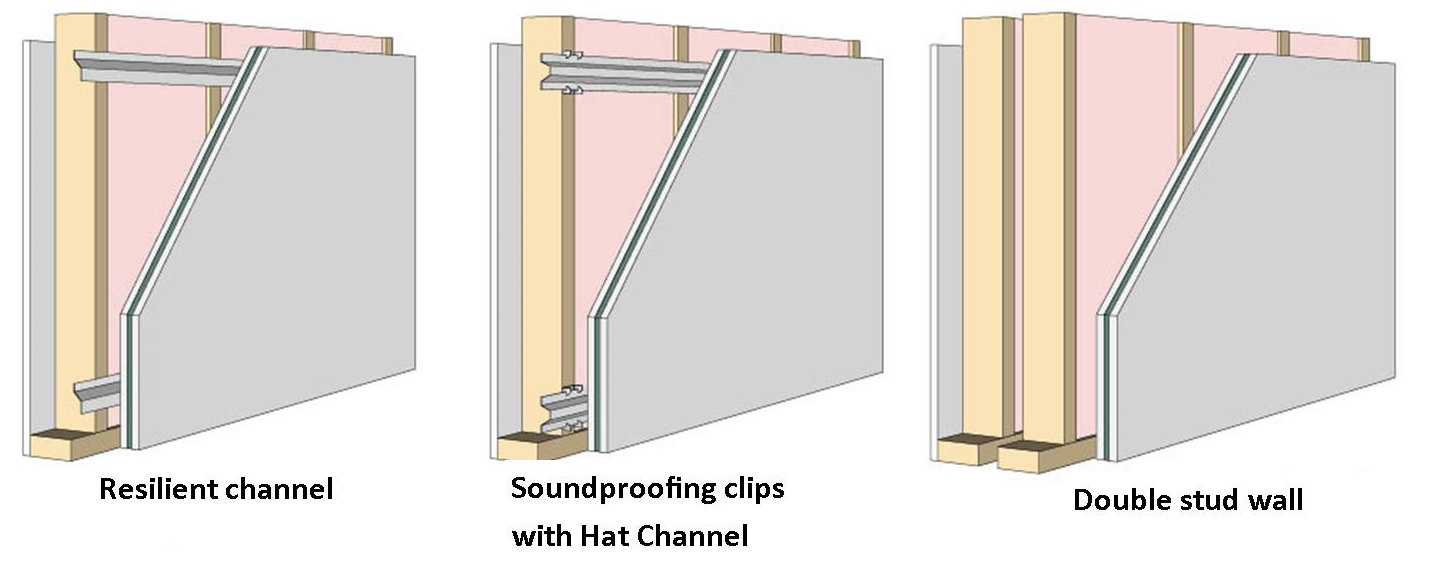
John Bleasby
Is there a silver bullet to sound proofing?
Canadian ContractorNew construction or renovation, walls or floors. Each has challenges and solutions
Soundproofing arises as a major frustration for owners of both new and renovated homes alike. Whether it’s a semi-detached home with the future ACDC living next door, or popular hardwood floors that transmit noise to lower levels like a drum, sound transmission between walls and floor surfaces needs to be addressed correctly first time. It’s a really hard problem to fix after the fact.
Two kinds of sound, four types of solutions
Essentially, there are two types of sounds. Voices, music and television are airborne or ambient sound. Air is the medium of transmission, so filling empty cavities, either between wall studs or floor joists, is a good first step.
Just as annoying are impact sounds caused by shoes on hardwood, dropped items, or running water. In this case, the hard materials themselves are the sound transmission materials. The solution is to somehow disconnect the materials from each other so transmission is interrupted. That can be trickier.

Adding mass (additional layers of drywall) can help, if you have access to both sides of the wall.
Left: standard single layer each side; Middle: double layer 1-side, single layer the other; Right: double layer both sides
(Graphic from The Soundproofing Company)
The solutions in four words; de-coupling, absorption, mass, and dampening.
‘Wall-to-wall sound’ is favorable only in the world of studio music production. Why not just stuff insulation in to the wall cavity and call it quits? It helps, but walls simply stuffed with batt insulation still can transmit a lot of sound. Studies show the Sound Transmission Class (STC) is about 38 with a wood stud wall, and 45 with metal studs. Admittedly, that’s better than an STC rating of 15 in an uninsulated wall. However, adding a second layer of gypsum gives the wall more mass and therefore reduces sound transmission. That second layer raises a standard wood stud wall to an STC level of 40. Yet it is only a partial solution. Better still would be to screw that added layer of gypsum directly to a series of horizontal channels. That’s ‘decoupling’ and ‘mass’. With the batt insulation added for absorption, this system can bring that wood stud wall up to an STC of near 52. Using sound gaskets and caulking at contact points also helps. Even simple beads of caulking between two sandwiched gypsum layers add a level of ‘absorption’ too. The graphic here shows the improvement with each step taken.
“I like my neighbor upstairs, but she runs in her stilettos!”
Floors and joist systems transmit not only footfalls but also the sound of running water in plumbing installed between levels. One method to deal with this involves the fourth key solution; ‘dampening’. Consider a series of flexible metal channels underneath the drywall ceiling below, or some form of resilient, absorbing sub-floor on the level above. In addition, fill the gaps between floor joists with glass, cellulose, or wood fibre batts; each are almost equally effective.
In new construction, you have the option of adding joint gasket tape to the tops and bottoms of each floor joist as a dampener, applying sound dampening glue compound to the subfloor, and using sound clips between joists.

Other soundproofing options include channel with or without hat clips, and double stud walls if space permits
Can improvements be made without gutting the rooms?
That may be fine with new construction, but with a renovation, tearing out the drywall from walls and ceilings may not be an option. Experts suggest a second layer of drywall be installed on a series of standard metal studs on 24 inch centres installed on the existing ceiling, with flexible caulking around the edges of the wall-ceiling juncture. The gaps are filled with batt insulation and new drywall is then installed on top. While this may lower the ceiling a bit, it simplifies the job considerably.
If the sound transmission is floor-to-floor within your client’s own home, it might be best to deal with the floor above rather than the ceiling below. Using a dense membrane like mass-loaded vinyl (MLV) or a similar membrane that does not require any fasteners under the final flooring, will dampen noise transmitted by footfalls without changing the character of the hard floor surface itself.
Foam or batts? Is one better than the other?
Is spray foam insulation a better sound barrier than batt insulation? Surprisingly, many experts say ‘No’. Foam may be great for thermal insulation, but not so good for sound insulation. While open cell foam is better than closed cell foam, both types can bond to the sides of the wall or floor and thus actually aid the transmission of sound. In fact, even compacting batt insulation inside a wall cavity beyond its nominal thickness can in fact increase sound transmission, not dampen it. That may sound counter-intuitive but it’s proven in labs.
Other ideas? Check for leaks!
Sound leaks through walls and floors much like water. Check obvious things like ceiling fixtures, switch boxes, receptacle boxes, and door casing. Consider sweeps at door bottoms too. If all this is too much work to be practical, there is the old standby of redecorating with sound absorbing materials like wall panels, or replacing hollow core doors with solid ones. It all adds up.
Follow John on Instagram and on Twitter for notifications about his latest posts


Leave a Reply